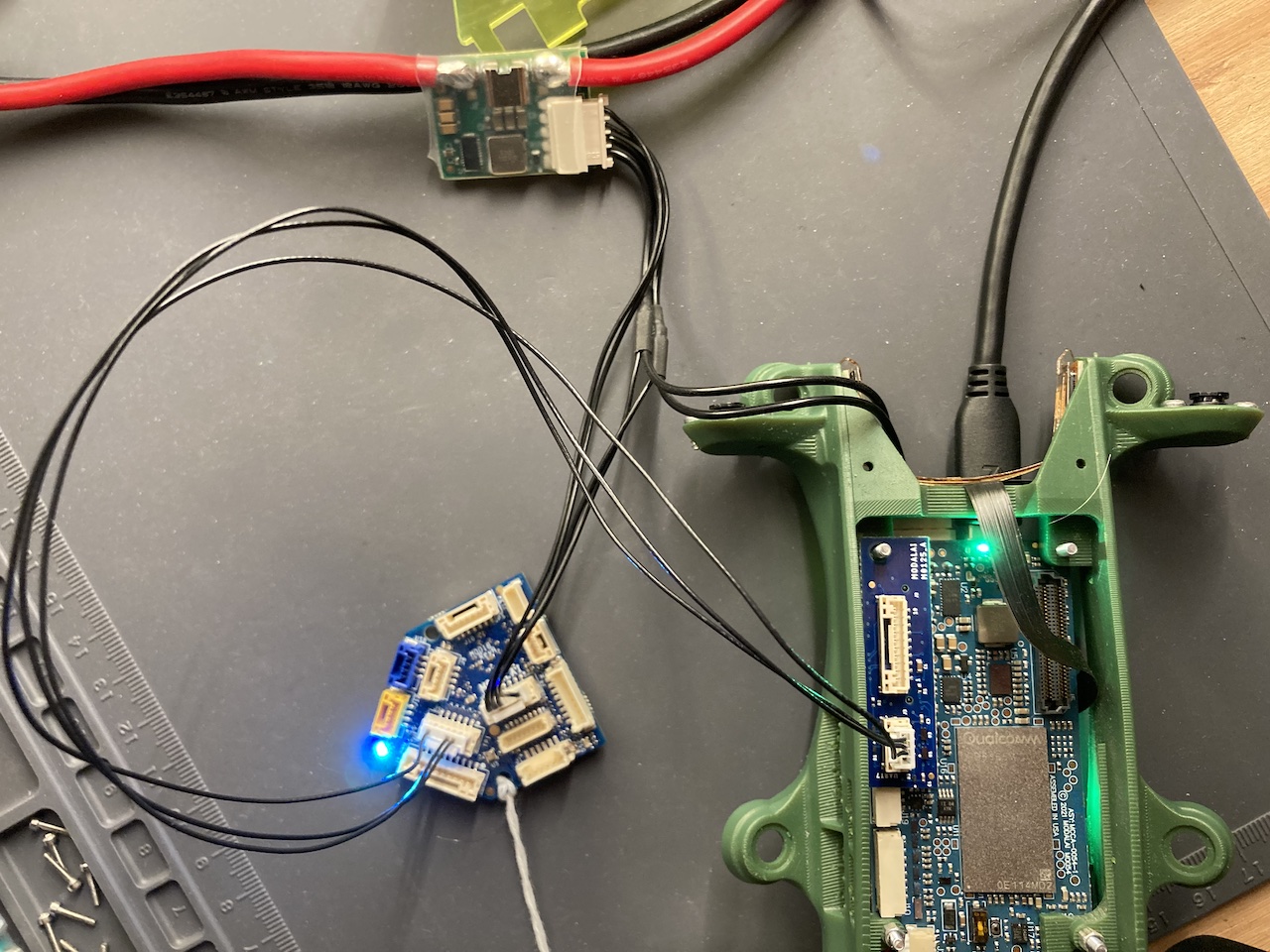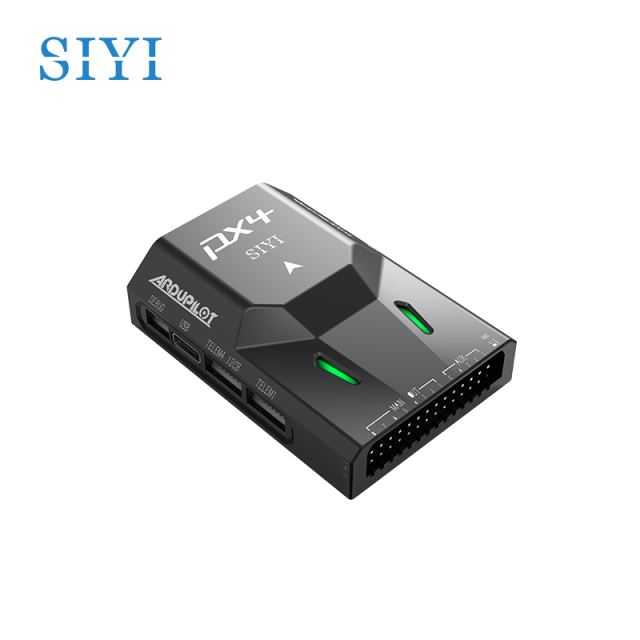The Future of UAVs: SparkNavi Drone Flight Controller and GNSS/INS Made in Taiwan
The Future of UAVs: SparkNavi Drone Flight Controller and GNSS/INS Made in Taiwan
Blog Article
A Comprehensive Overview to Selecting the Right Drone Trip Controller for Your Unmanned Aerial Car Demands
Selecting an appropriate trip controller for your unmanned aerial automobile is a critical choice that can substantially influence its functional capacities and general performance. Different factors, including the kind of UAV you are using and your intended application, have to be meticulously analyzed. Secret attributes such as refining power, sensing unit compatibility, and telemetry choices play a vital duty in ensuring efficient assimilation. As the landscape of available choices broadens, comprehending these elements comes to be increasingly important for accomplishing your UAV goals. The concern remains: what criteria should direct your choice process to ensure optimum efficiency?
Comprehending Trip Controller Kinds
When diving into the world of drone modern technology, understanding the various kinds of flight controllers is vital for selecting the appropriate one for your requirements. Trip controllers offer as the brain of the drone, managing its trip characteristics and stabilizing the airplane throughout operation.

On the other hand, fixed-wing trip controllers are customized for drones with conventional wing structures, resembling airplanes - SparkNavi drone flight controller and GNSS/INS made in taiwan. These controllers concentrate on enhancing long-duration trip and gas performance, as they permit gliding and call for less power compared to multi-rotor systems
In addition, there are hybrid controllers that incorporate features of both types, satisfying versatile applications. Choosing the proper trip controller involves examining your drone's design, intended usage, and needed efficiency, establishing a foundational understanding that is essential for effective drone procedure.
Key Features to Consider
Examining the essential functions of a flight controller is vital for ensuring optimum efficiency and compatibility with your drone's design and designated applications. Among the primary aspects to think about is the controller's processing power. A greater handling speed makes it possible for quicker feedback times and far better handling of intricate maneuvers, especially in high-stress environments.
Another substantial function is the variety of supported sensors and peripherals. Advanced trip controllers often sustain several sensors, such as general practitioner, accelerometers, and gyroscopes, enhancing flight security and accuracy. The accessibility of telemetry assistance is important for real-time data transmission back to the driver, which helps in keeping an eye on drone performance.

Finally, the dimension and weight of the trip controller ought to line up with your drone's specs, guaranteeing that it does not compromise trip performance. By very carefully assessing these vital functions, you can select a flight controller that satisfies your UAV's operational needs and boosts its capabilities.
Compatibility With Your UAV
Making sure compatibility in between your trip controller and UAV is vital for achieving smooth procedure and optimal performance (SparkNavi drone flight controller and GNSS/INS made in taiwan). The combination of these 2 components can significantly affect flight stability, control responsiveness, and total functionality. When selecting a trip controller, it is critical to verify that it supports the details configuration and needs of your UAV, including its dimension, weight, and desired applications
Start by examining the communication procedures used by both the flight controller and your UAV. Typical protocols include PWM, PPM, and S.Bus, which promote the transmission of signals between elements. Furthermore, consider the power requirements of the trip controller and make sure that your UAV's power circulation system can adequately provide the required voltage and present.
Another important element is the physical measurements and mounting choices. The flight controller should fit securely within your UAV's framework, permitting efficient airflow and defense from outside aspects. Assess the compatibility with other onboard systems such as GPS, telemetry, and cameras, as these integrations can enhance the capacities of your UAV and contribute to a more sophisticated flying experience.
Popular Trip Controller Brands

Among one of the most identified brand names is DJI, known for its straightforward user interfaces and progressed stabilization innovation. DJI flight controllers are often chosen for commercial applications due to their dependability and comprehensive assistance ecosystem. Another significant gamer is Pixhawk, an open-source platform that permits substantial modification and adaptability, making it preferred among enthusiasts and scientists.
Kiss and Betaflight have obtained grip within the racing drone community for their lightweight, high-performance controllers that prioritize rate and responsiveness. At the same time, Vector and APM supply durable services that accommodate both recreation and expert UAV demands, boasting innovative features like independent flight abilities.
Finally, the surge of brand names like Holybro and Matek has introduced cutting-edge, budget-friendly choices that do not jeopardize performance. Each brand name provides distinct benefits, making it necessary for customers to examine their specific requirements and select a flight controller that lines up with their functional goals.
Tips for Installation and Arrangement
Choosing the right flight controller is just the start; correct dig this installment and configuration are vital to maximizing performance and ensuring the drone operates as meant. Begin by very carefully reviewing the supplier's instructions, as each flight controller might have specific needs. Make sure that all elements work, including the motors, batteries, and escs, to avoid efficiency problems.
.png)
When mounting the flight controller, safeguard it firmly to the drone frame, preferably in a vibration-dampened manner to minimize noise disturbance - SparkNavi drone flight controller and GNSS/INS made in taiwan. Position the controller in such a way that enables optimum GPS function, commonly with a clear sight of the sky. Link all required wiring methodically, focusing on shade codes and pin layouts to stop misconfiguration
Make use of the producer's software tools to calibrate the controller, guaranteeing that all sensing units, consisting of gyroscopes and accelerometers, are appropriately set up. It is recommended to conduct a pre-flight check to confirm setups and execute examination trips in a risk-free, open location.
Conclusion
In conclusion, selecting the proper drone flight controller is vital for making the most of the performance and capability of unmanned aerial vehicles. By understanding trip controller types, evaluating key features, and making certain compatibility with particular UAV arrangements, customers can make educated choices. Experience with prominent brands and adherence to installation standards will certainly facilitate seamless assimilation and dependable operation. Careful consideration of these elements eventually improves the overall effectiveness of UAV applications across different industries.
There are mostly 2 categories of flight controllers: multi-rotor and fixed-wing controllers.Reviewing the essential features of a flight controller is crucial for making certain optimum efficiency and compatibility with your drone's style and intended applications. Advanced flight controllers usually sustain a number of sensing units, such as General practitioner, accelerometers, and gyroscopes, enhancing flight stability and precision.Picking the best trip controller is just the start; correct installment and configuration are important to making best use of performance and ensuring the drone pop over to these guys runs as intended.In conclusion, choosing the appropriate drone flight controller is important for maximizing the efficiency and performance of unmanned aerial cars.
Report this page